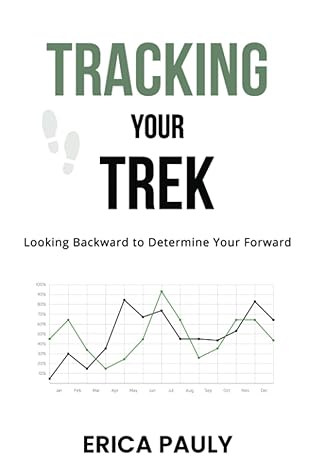Answered step by step
Verified Expert Solution
Question
1 Approved Answer
Anything written in parenthesis or a blank $ need answers!! Thanks Problem 12-22 (LO. 3, 7) Paul Chaing acquires a qualifying historic structure for $350,000
Anything written in parenthesis or a blank $ need answers!! Thanks
Problem 12-22 (LO. 3, 7)
Paul Chaing acquires a qualifying historic structure for $350,000 (excluding the cost of the land) and plans to substantially rehabilitate the structure. He is planning to spend either $320,000 or $380,000 on rehabilitation expenditures.
Complete the letter to Paul and the memo for the tax research files that outlines the two alternative expenditures, which includes:
- The computation that determines the rehabilitation expenditures tax credit available to Paul.
- The effect of the credit on Paul's adjusted basis in the property.
- The cash-flow differences as a result of the tax consequences related to his expenditure choice.
| Money, Young, Nellen, & Persellin, CPAs 5191 Natorp Boulevard Mason, OH 45040 | |
| September 27, 2020 | |
| Mr. Paul Chaing 4522 Fargo Street Geneva, IL 60134 | |
| Dear Mr. Chaing: | |
| This letter is in response to your questions concerning the availability of the rehabilitation tax credit for expenditures that you plan to incur in the rehabilitation of your qualifying historic structure and their impact on the cost recovery basis of the structure. It is our understanding that you purchased the qualifying historic structure for $350,000 and that you intend to incur rehabilitation expenditures of either $320,000 or $380,000. | |
| For the credit to be available, the law requires that a taxpayer substantially rehabilitate the structure. If you incurred rehabilitation expenditures of $320,000, the credit [WOULD/WOULD NOT] be available and the cost recovery basis of the structure would be $_. | |
| By incurring $380,000 on rehabilitation expenditures, the credit [WOULD/WOULD NOT] be available and the cost recovery basis of the structure would be $_. | |
| Because the rehabilitation tax credit is available if you choose the renovation plan costing [$320,000/$380,000] , you need to consider carefully the impact the credit will have on your short-term cash-flow position. Based solely on current cash flow due to the cost of the two projects and the potential tax credit, you [WOULD/WOULD NOT] benefit by selecting the more expensive renovation project. The net cash flow [GAIN/LOSS] would be $_. Of course, other considerations, including the reduced depreciation deduction associated with the credit, may impact your decision, but the benefit of the tax credit is indisputable. | |
| Should you need more information or need clarification of our conclusions, please feel free to contact me. | |
| Sincerely, | |
| Emily Jang, CPA Partner
| |
| TAX FILE MEMORANDUM | |
| September 27, 2020 | |
| FROM: Emily Jang, CPA | |
| SUBJECT: Mr. Paul Chaing Impact of the Rehabilitation Tax Credit | |
| Paul Chaing has acquired a qualifying historic structure for $350,000 with the intention of substantially rehabilitating the building. He has inquired as to the availability of the rehabilitation tax credit and its impact on the structure's cost recovery basis if he incurs either $320,000 or $380,000 of qualifying rehabilitation expenditures. | |
| To qualify for the rehabilitation credit, Paul must substantially rehabilitate the structure. The substantial rehabilitation requirement provides that a taxpayer [MUST/MAY NOT] incur rehabilitation expenditures that exceed the greater of (1) the adjusted basis of the property [BEFORE/AFTER] the rehabilitation ($350,000), or (2) $_. Therefore, if Paul chose to incur only $320,000 on the rehabilitation, the amount [WOULD/WOULD NOT] be enough to qualify as a "substantial rehabilitation" and [CREDIT/NO CREDIT] would be available. The depreciable basis of the property would be the sum of its original cost plus the capital improvements, or $_. | |
| If Paul incurred $_ for the rehabilitation project, a substantial rehabilitation would result. Therefore, the rehabilitation tax credit available to Paul would be $_. The depreciable basis of the property, which would be reduced by the full amount of the credit, would be $_. | |
| Although other considerations would likely be relevant to Mr. Chaing while he decides which of the two renovation projects to pursue, certainly the impact of the rehabilitation tax credit on the current cash flow [SHOULD/SHOULD NOT] be overlooked. If he decides to undertake the more expensive project, the higher cost would be more than offset in the current year by the benefit he would receive from the tax credit. Thus, the short-term cash flow advantage would total $_. Note that this cash-flow advantage would be reduced slightly by the smaller depreciation deduction associated with the credit. | |
Step by Step Solution
There are 3 Steps involved in it
Step: 1

Get Instant Access to Expert-Tailored Solutions
See step-by-step solutions with expert insights and AI powered tools for academic success
Step: 2

Step: 3

Ace Your Homework with AI
Get the answers you need in no time with our AI-driven, step-by-step assistance
Get Started


